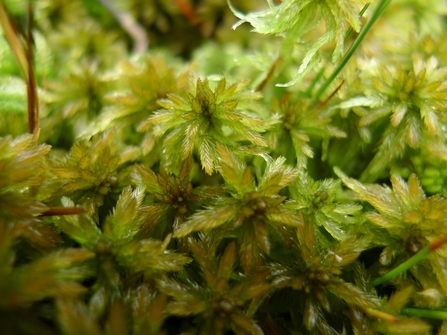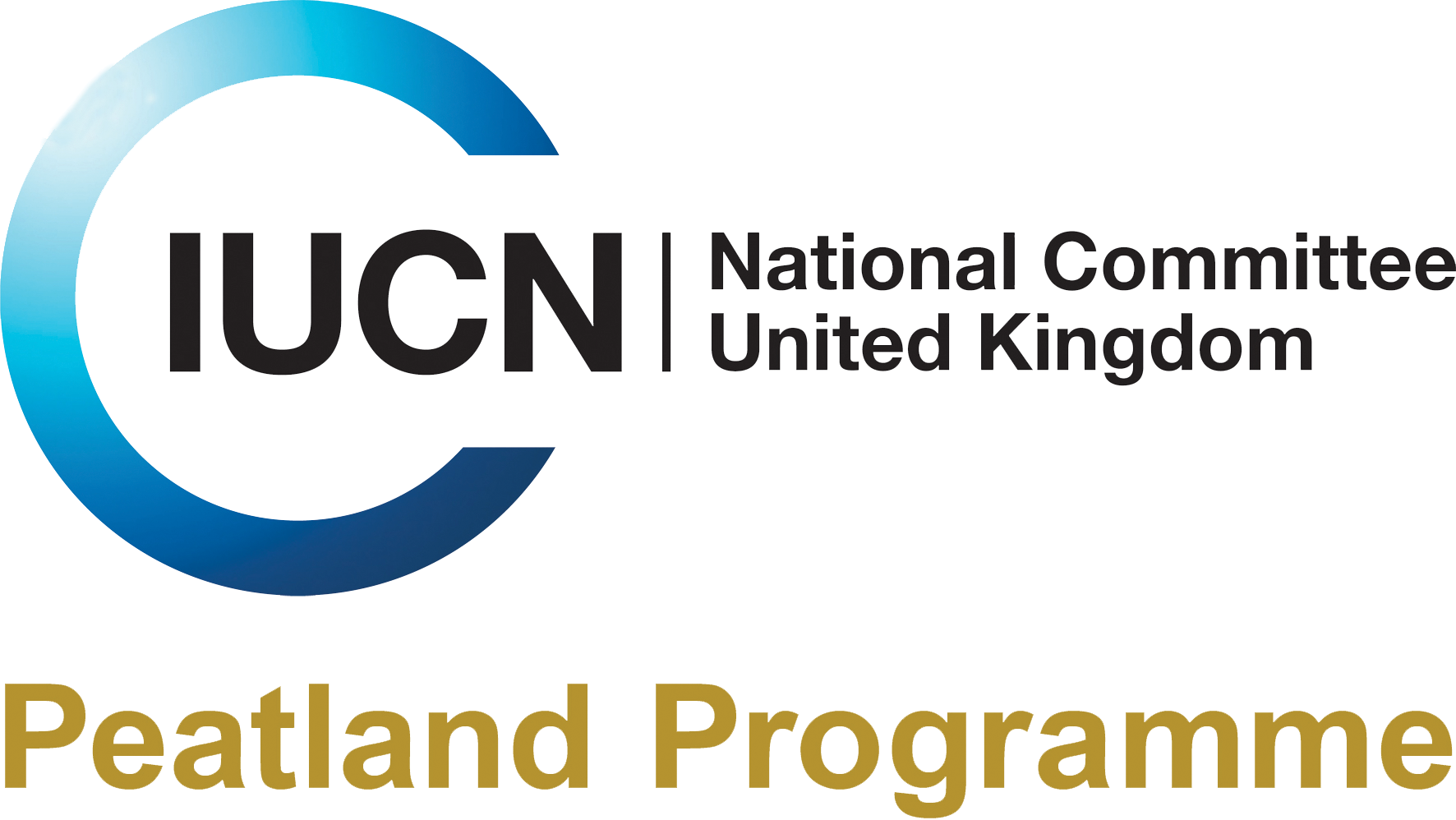Peatlands regulate water flow
Peatlands are not only an important source of water in the UK - they are also key ecosystems in regulating water flows and reducing the risk of floods. As well as the water stored within the peat soils, peatlands can store water on their surface which can reduce and delay flood peaks during high rainfall events1. For example, the river corridors of lowland peatlands (such as The Broads in Norfolk) provide areas of water storage within natural floodplains. The water storage capacity of peatlands also helps maintain base flows in water bodies during periods of drought. Peatlands therefore play an important role in adapting to the changes in future rainfall patterns driven by climate change.
Structure is more important than storage during rain events
In many catchments, water flows over the surface after a rainfall event – this is called overland flow. In healthy peatlands, the water level within the soil is close to the surface and the capacity to store significant additional water is low. This means that peat can rapidly become saturated and rain can run off the surface quickly. Whilst peatlands have the capacity to hold some excess water, the idea of peatlands acting as a ‘sponge’ is incorrect, and even intact blanket peatlands can still produce storm runoff2. Generally speaking, bogs are water shedding systems and fens are water receiving systems. Water will naturally leave a bog peatland due to high levels of saturation. Fen peatlands typically sit in depressions or lower points in the landscape and so typically receive and hold water during wetter periods.
However, the structure of surface vegetation is key to slowing down overland flow in peatlands. Vegetation cover and variety of structures increases the roughness of the surface, and it has been observed that overland flow can move ten times slower across Sphagnum-covered ground compared to a bare peat surface3. Different Sphagnum species can hold up to c. 25 times their dry weight in water and play a significant role in moderating water flow, thus helping to reduce downstream impacts of heavy rain. Many types of fen vegetation are adapted to periods of flooding, but the duration of flooding and quality of water can impact on the health of fen habitats.

Lindberg’s bog-moss (Sphagnum lindbergii). Credit Emma Hinchliffe
Degraded peatlands increase the rate of water movement and can contribute to flood risk
Peatland degradation can further increase the risk of flooding. Removal of vegetation reduces the ability of peatlands to slow overland flow, and the creation of small (e.g. peat soil cracking) and large drainage channels (e.g. artificial drains or erosion gullies) accelerates the rate at which water leaves a peatland. Bare peat can become so dry that water will no longer infiltrate the peat, potentially exacerbating flood impacts. Extensive drainage of lowland peatlands can also lead to subsidence, which has been observed to increase flood risk4.
Natural Flood Management through peatland restoration
In the UK, many communities vulnerable to flooding have large areas of peatland in their upstream catchments. Natural Flood Management (NFM) is an approach that can be used to reduce flood risk for vulnerable communities. This is achieved through the restoration of natural processes and hydrological functions in peatlands and other habitats that have been altered or degraded through human activity5.
Blanket peat restoration interventions have been shown to significantly reduce flood risk to vulnerable downstream communities6. Peatland restoration measures have been found to change catchment runoff regimes, reduce peak flows and contribute to NFM, particularly in small catchments that are less than 20 km2 in size, with assumed similar effects in larger catchments5.
The effects of peat restoration on flood risk. Credit Tim Allott
Peatland restoration methods that mitigate flood risk
The following peatland restoration methods adopted in the UK have been observed to mitigate flood risk:
Restoring surface vegetation: Re-vegetating bare peat with peatland plants and reintroducing Sphagnum moss to degraded peatland both reduce peak flows by increasing surface roughness and slowing storm runoff on hillslopes6,7. There is also evidence that peatlands restored after severe fires will have lower peak flows compared to severely burnt peatlands which are left in a damaged state5.
Re-introduction of Sphagnum moss increases the roughness of the surface, slowing down flood waters. Credit unknown
Blocking of erosional gullies and artificial drainage channels: The presence of artificial drainage channels or erosion gullies accelerates the rate at which water leaves a peatland catchment. Blocking drainage channels increases the surface storage of flood waters in pools and hollows. Stormwater is unable to flow into river channels as quickly, leading to delayed and reduced peak flows in small catchments5.
Blocking of gullies can increase the surface storage of flood waters. Credit Penny Anderson
More detail about NFM and restoration methods can be found in Peatland Catchments and Natural Flood Management.
Forest to bog restoration effects
Based on the current knowledge of forest hydrology, the removal of conifer forest from peatlands is predicted to increase flood peaks because trees intercept rainfall and evaporate more water than shorter types of vegetation5. Therefore, care must be taken to minimise potential adverse effects of restoration of afforested peatlands. However, restoring the hydrological function of peatlands has significant long-term benefits to water quality, as illustrated in our publication ‘Demonstrating Success: Forest to Bog Restoration’.
References
1. Gao J, Holden J, and Kirkby M. The impact of land-cover change on flood peaks in peatland basins. Water Resources Research. 2016; 52(5): 3477-3492. https://doi.org/10.1002/2015WR017667.
2. Labadz J, Allott TEH, Evans M, Butcher D, Billett M, Stainer S et al. Peatland Hydrology. Draft Scientific Review. 2010.
3. Holden J, Kirkby MJ, Lane SN, Milledge DG, Brookes CJ, Holden V et al. Overland flow velocity and roughness properties in peatlands. Water Resources Research. 2008; 44(6). https://doi.org/10.1029/2007WR006052
4. Ikkala L, Ronkanen AK, Utriainen O, Kløve B and Marttila H. Peatland subsidence enhances cultivated lowland flood risk. Soil and Tillage Research. 2021; 212: 105078. https://doi.org/10.1016/j.still.2021.105078
5. Allott TEH, Auñón J, Dunn C, Evans MG, Jill L, Paul L et al. Peatland Catchments and Natural Flood Management. Report to the IUCN UK Peatland Programme. 2019.
6. Goudarzi S, Milledge DG, Holden J, Evans MG, Allott TEH, Shuttleworth EL et al. Blanket Peat Restoration: Numerical Study of the Underlying Processes Delivering Natural Flood Management Benefits. Water Resources Research. 2021; 57(4). https://doi.org/10.1029/2020WR029209
7. Shuttleworth EL, Evans MG, Pilkington M, Spencer T, Walker J, Milledge D et al. Restoration of blanket peat moorland delays stormflow from hillslopes and reduces peak discharge. Journal of Hydrology X. 2019. https://doi.org/10.1016/j.hydroa.2018.100006
